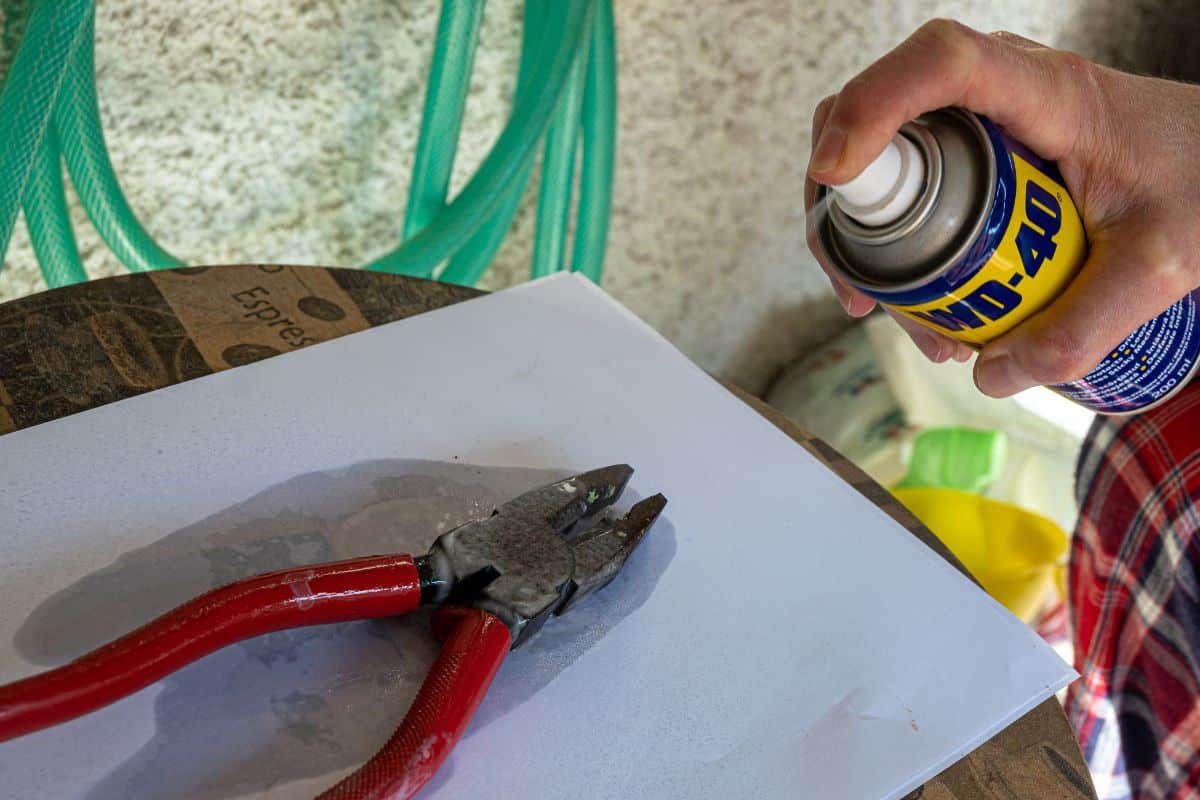WD-40 is a versatile product that can be used for many things around the house, such as cleaning, lubricating, and protecting. But can you use WD-40 to remove glue from plastic? Let's take a look to see if it's safe to use WD-40 on plastic.
It's important to note that WD-40 is not a glue remover, but it can help to loosen the bond between the glue and the plastic surface. To remove glue from plastic with WD-40, simply spray the product onto the affected area and let it sit for a few minutes. Then, use a soft cloth to wipe away the residue.
As you can see, WD-40 can be a helpful tool when it comes to removing glue from plastic. In this article, we will take a closer look at how to use WD-40 to remove glue from plastic. In addition, we will answer other frequently asked questions about WD-40, so read on!
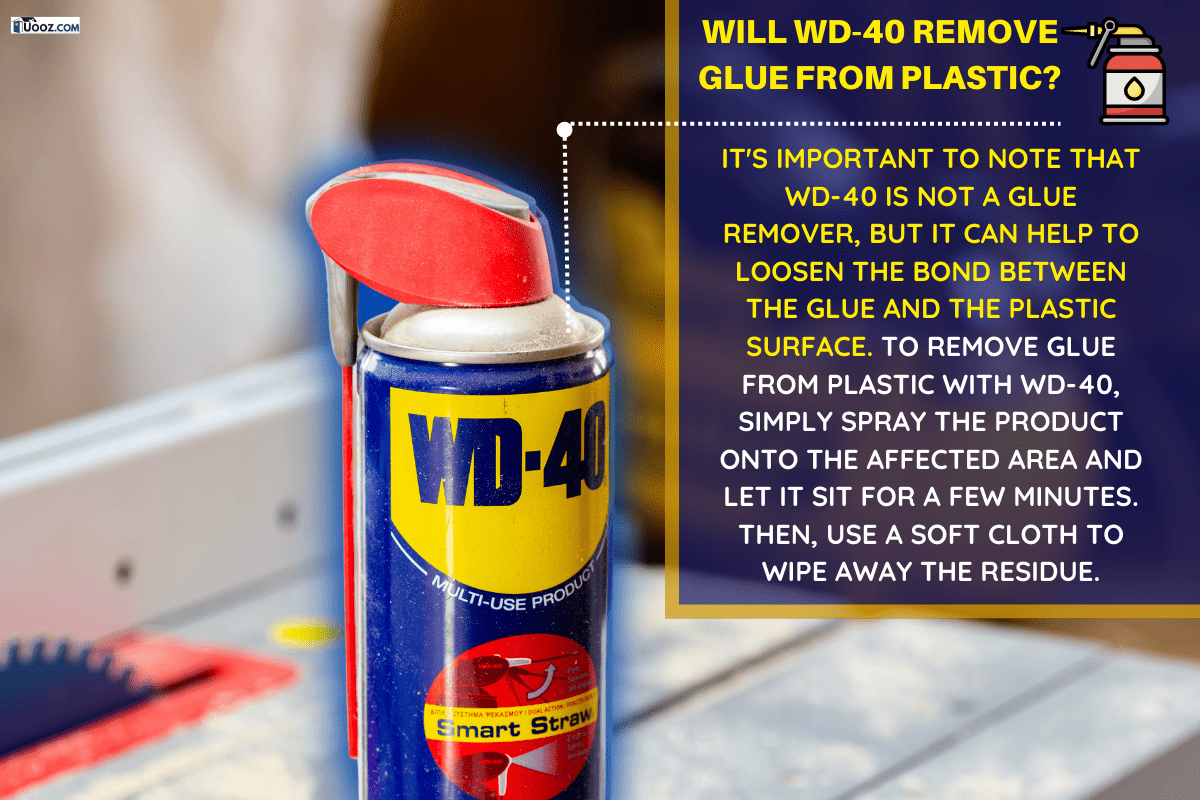
How Do You Remove Glue From Plastic Using WD-40?
Originally used for space-age applications, WD-40 is a versatile product that can be used for many things around the house. From cleaning to lubricating to protecting, this product can do it all.
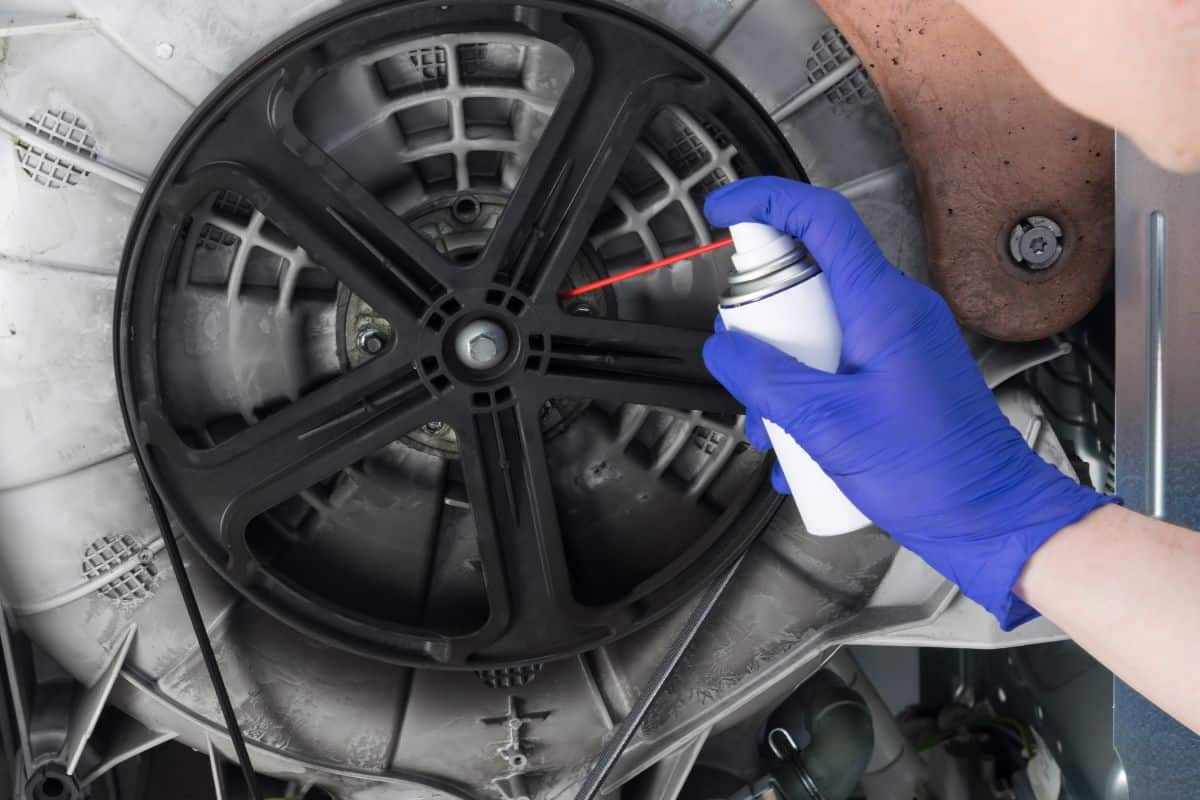
But if you accidentally spilled glue on a plastic surface and are now looking for a way to remove it, you may be wondering if WD-40 can help.
While it isn't specifically designed for removing glue, WD-40 can help to loosen the bond between the glue and the plastic surface. Applying WD-40 to the affected area will help break down the glue so that you can wipe it away more easily.
To remove glue from plastic with WD-40, simply spray the product onto the affected area and let it sit for a few minutes. Then wipe away the residue with a soft cloth. You may need to repeat this process a few times to completely remove all traces of glue.
Once the glue is removed, you should wash the area with soap and water to remove any WD-40 residue.
In addition, using a putty knife or other sharp object to scrape away the glue can help speed up the process. Just be careful not to scratch the plastic surface beneath.
To ease the process, apply the WD-40 as soon as you notice the glue. If the glue has had time to dry, it may be more difficult to remove.
WD-40 can be a helpful tool when it comes to removing glue from plastic. Keep reading to learn more about how to use WD-40 and other frequently asked questions about this versatile product.
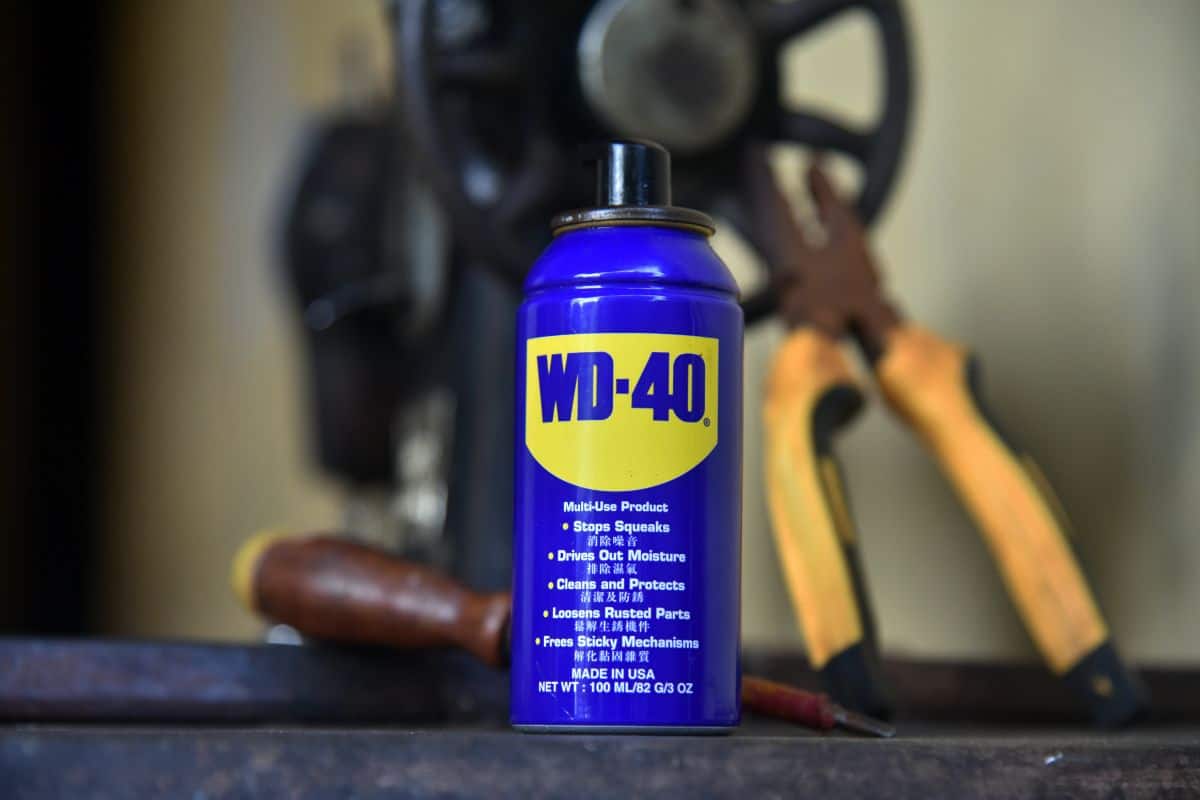
What Type Of Materials Can WD-40 Be Used On?
In addition to removing glue from plastic, WD-40 can be used on a variety of surfaces, including metal, wood, and fabric.
In fact, WD-40 has over 2,000 listed uses, including many surprising ones that you may not have thought of. For example, did you know that WD-40 can be used to remove crayons from walls or clean a dirty oven?
Nonetheless, you should still double-check to make sure that it is safe to use WD-40 on a particular surface before proceeding. This is because the product may damage some surfaces, such as painted walls or finished wood.
To err on the side of caution, always test WD-40 in an inconspicuous area before using it on a larger surface.
In general, WD-40 is safe to use on most surfaces. However, it is always best to double-check and test the product in a small area before proceeding.
Can WD-40 Be Used To Clean Plastics?
If you have a plastic surface needing a good cleaning, you may be wondering if WD-40 can help.
The short answer is yes, WD-40 can be used to clean plastics. Simply spray the product onto the surface, and wipe away the dirt and grime with a soft cloth.
You should still wipe away any leftover residue from the WD-40 with a damp cloth afterward. Avoid letting WD-40 sit for a prolonged period on plastic surfaces, as this may cause damage.
Does WD-40 Leave A Residue?
One drawback of WD-40 is that it can often leave a greasy residue behind. This can be problematic if you are using the product on surfaces that should not be greasy, such as door handles or computer keyboards.
To avoid this, always wipe away any WD-40 residue with a damp cloth after using the product. You may need to use a little elbow grease to remove the residue completely, but it will be worth it in the end.
Even though WD-40 is a superhero when it comes to removing glue from plastic, it's not perfect. The gummy residue it leaves behind can be difficult to remove, and it isn't always safe to use on all surfaces.
What Are Other Ways To Remove Glue From Plastic?
If you don't have WD-40 at home or if you are looking for an alternative method, there are a few other options you can try.
Rubbing Alcohol
As mentioned earlier, rubbing alcohol can be effective in removing glue from plastic. Simply apply the alcohol to a cotton ball or cloth and dab it onto the affected area. Let it sit for a few minutes, then wipe away the residue with a clean cloth.
Keep in mind that rubbing alcohol can damage some surfaces, so it is always best to test it in a small area first.
White Vinegar
Another option is to use white vinegar. Simply soak a cotton ball or cloth in vinegar and apply it to the sticky area. Let it sit for a few minutes, then wipe away the glue with a clean cloth. You may need to repeat this process a few times to completely remove the glue.
Nail Polish Remover
Nail polish remover is another possible solution. However, this method should only be used as a last resort, as nail polish remover can damage some plastics.
Soak a cotton ball or cloth in the remover to use nail polish remover and apply it to the glue. Let it sit for a few minutes, then wipe away the residue with a clean cloth. As with rubbing alcohol, you should always test this method in a small area first to be safe.
Warm Water And Dish Soap
A safe and gentle option is to use warm water and dish soap. Simply mix together a small amount of dish soap and warm water in a bowl.
Soak a cloth in the mixture and apply it to the glue. Gently rub the area until the glue begins to loosen, then wipe away the residue with a clean cloth. You may need to repeat this process a few times to completely remove the glue.
The nice thing about this method is you don't risk damaging the paint or finish on your plastic object.
Ammonia-Free Detergent And Water
Another safe and gentle cleaning method is to use ammonia-free detergent and water. Simply mix together a small amount of detergent and warm water in a bowl.
Like the other methods, let the cloth soak in the mixture and then apply it to the glue. Gently rub the area until the glue begins to loosen, then wipe away the residue with a clean cloth. You may still need to repeat this process a few times to remove all the glue.
The benefit of using this method is that it is less likely to damage the plastic than some of the other options.
Removing glue from plastic can be tricky whether you use WD-40 or one of these alternative methods. With a little patience and perseverance, you should be able to get the job done.
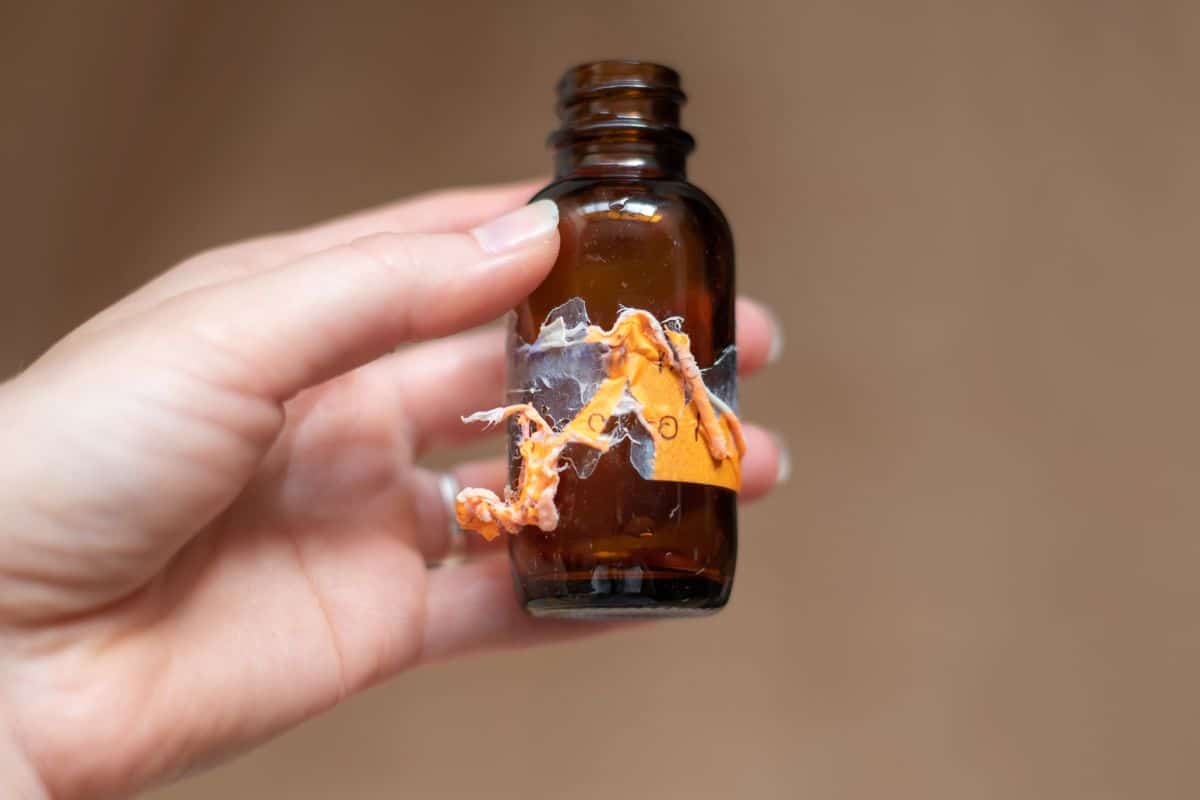
Can You Use Acetone To Remove Glue From Plastic?
While most nail polish removers contain acetone, pure acetone should not be used to remove glue from plastic. Acetone is a powerful solvent that can damage some plastics.
For example, if glue adheres to plastic trim in your vehicle, using acetone to remove it could damage the paint or finish. In some cases, it may even melt the plastic.
We recommend being very careful if you decide to use acetone or, better yet, avoid it altogether.
Final Thoughts
When it comes to removing glue from plastic, WD-40 is a good option. However, it's not perfect. The gummy residue it leaves behind can be difficult to remove, and it isn't always safe to use on all surfaces.
If you don't have WD-40 at home or are looking for an alternative method, you can try a few other options such as rubbing alcohol, white vinegar, nail polish remover, or warm water and dish soap.
Made it to the end? Here are other articles you might enjoy:
How To Remove WD-40 From Metal

